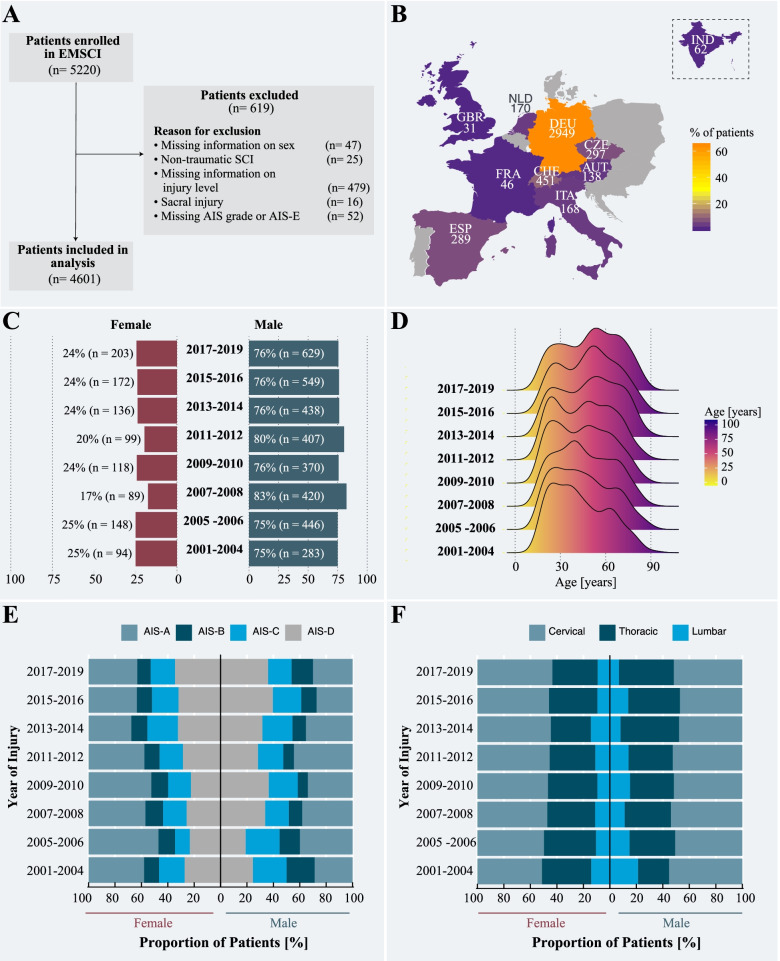Fig. 1.
Study overview and result from the main cohort. A Flowchart of the included and excluded patients that were originally enrolled in the European Multi-Center Study about Spinal Cord Injury (EMSCI) study. Almost 90% of the EMSCI patients met our inclusion criteria. B Number of patients recruited between 2001 and 2019 per country. The majority of patients were admitted to centers in Germany, Switzerland, and Czech Republic. Note: The Indian center joined the EMSCI network only in 2011. C Annual ratio between female and male individuals with spinal cord injury enrolled in the EMSCI. Between 2001 and 2019, the ratio between men and women sustaining a traumatic or ischemic spinal cord injury remained comparable at 3:1. D Change in distribution of age at injury. Over the last two decades, a shift in age at injury was observed for individuals with spinal cord injury. In comparison to early 2000s, which were characterized by a unimodal distribution, the proportion of elderly people sustaining a traumatic spinal cord injury increased significantly. E Baseline injury severity. While there are some fluctuations, the proportions of injury severities, as measured by AIS scores, remained constant across the study period. F Baseline level of injury. The proportion of cervical, thoracic, and lumbar injuries did not significantly change as a function of time

